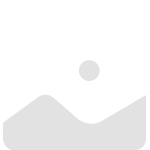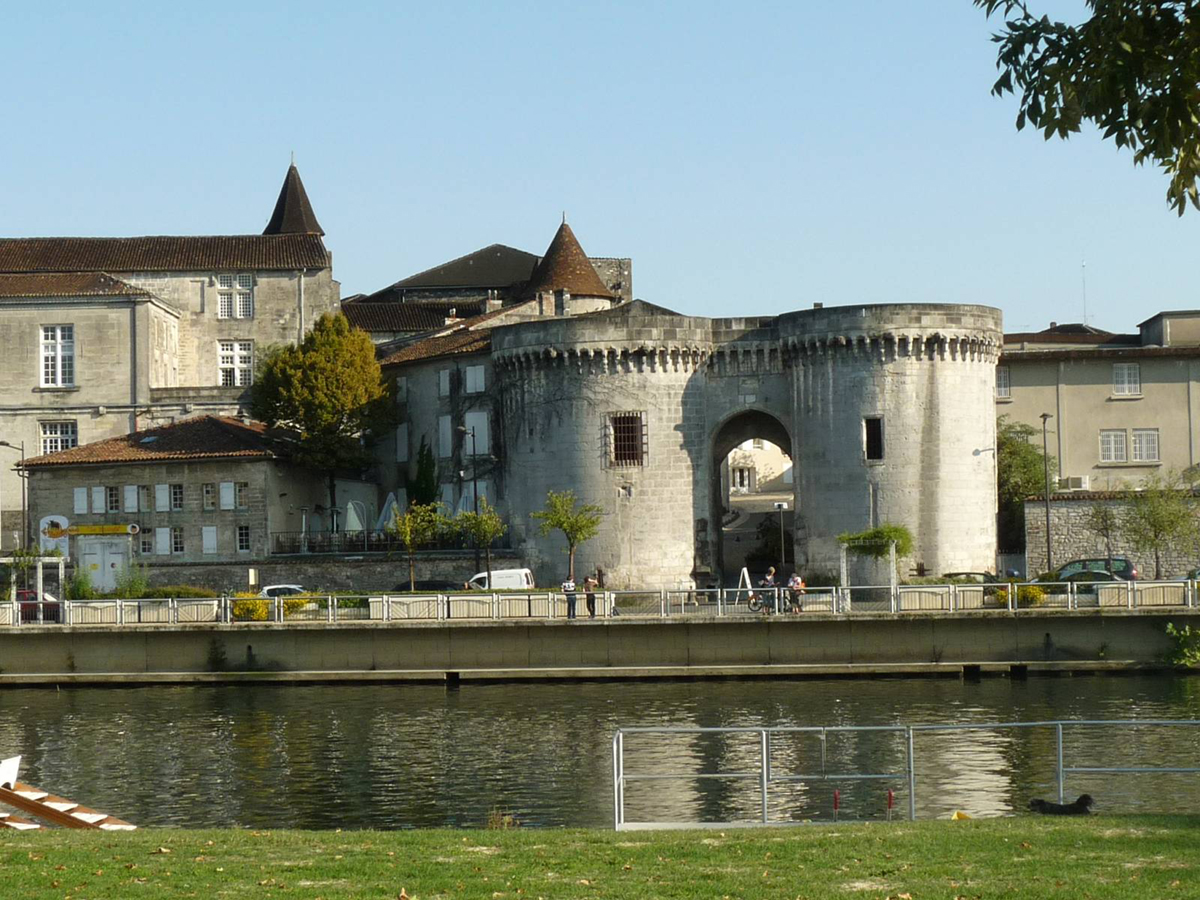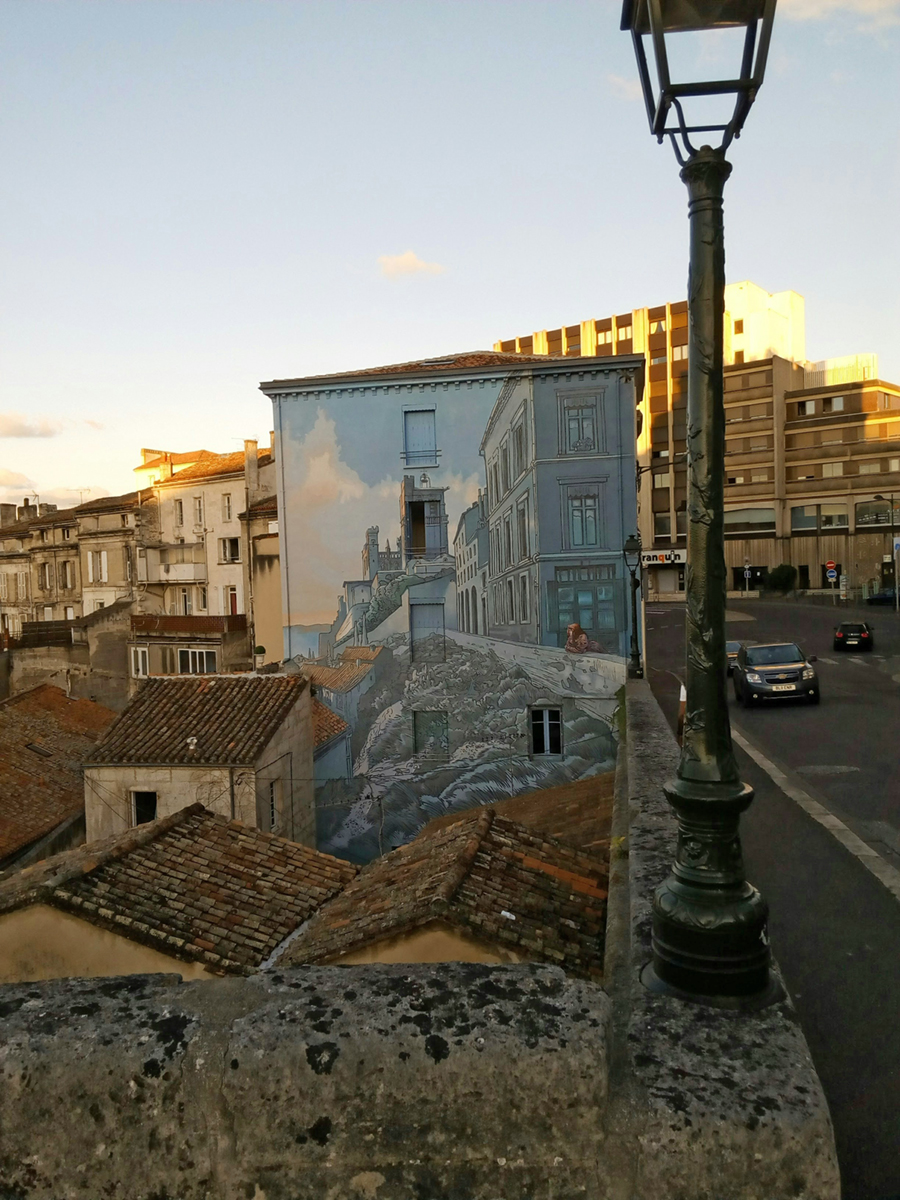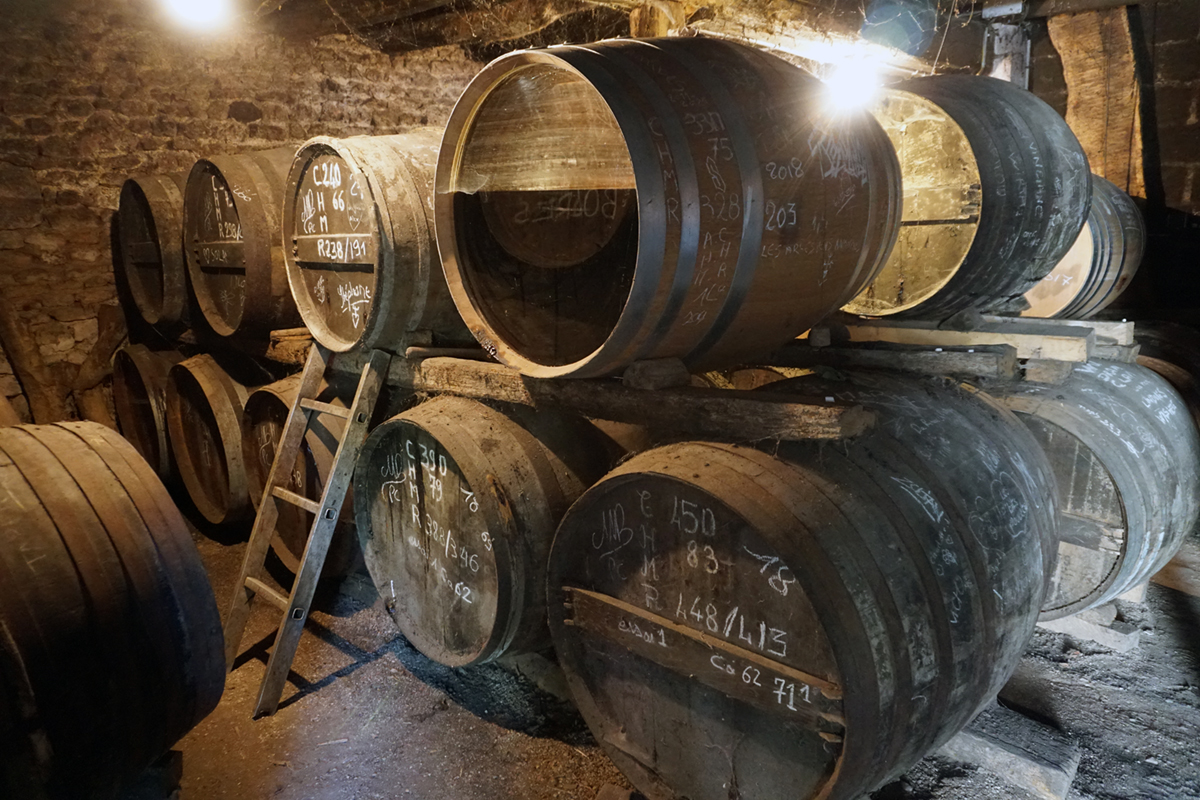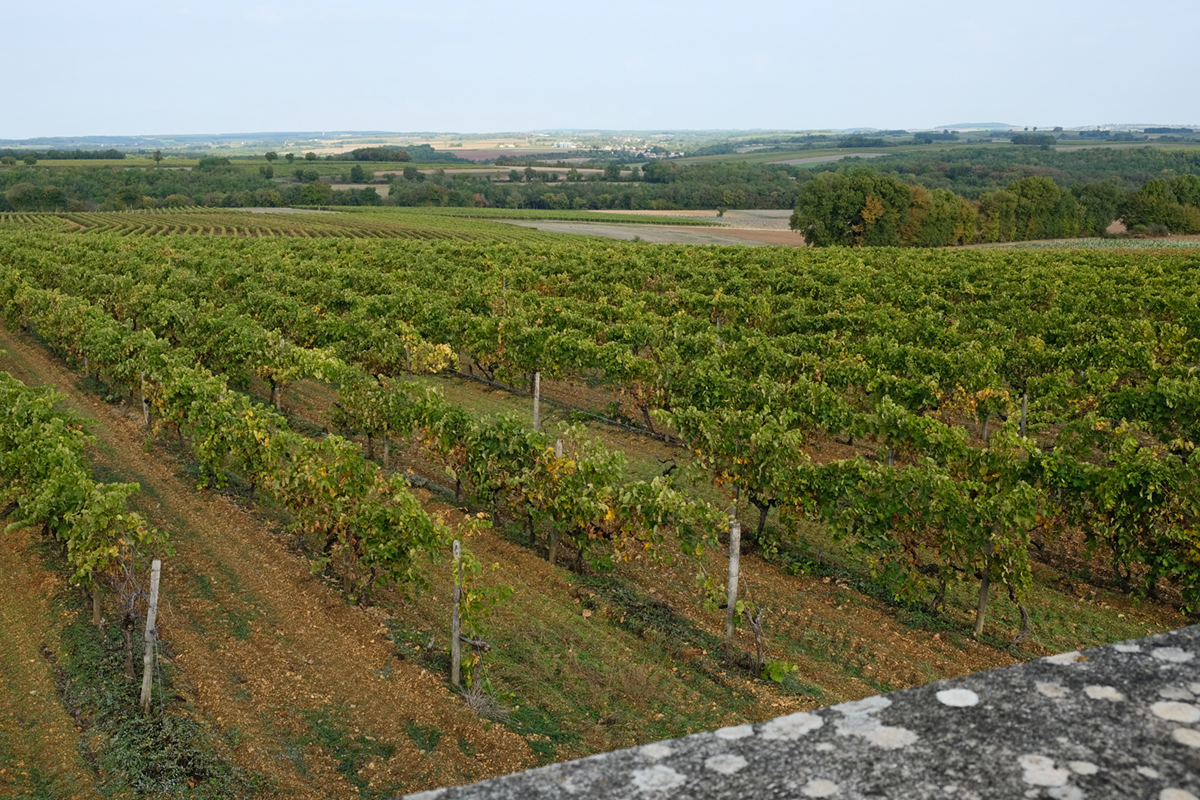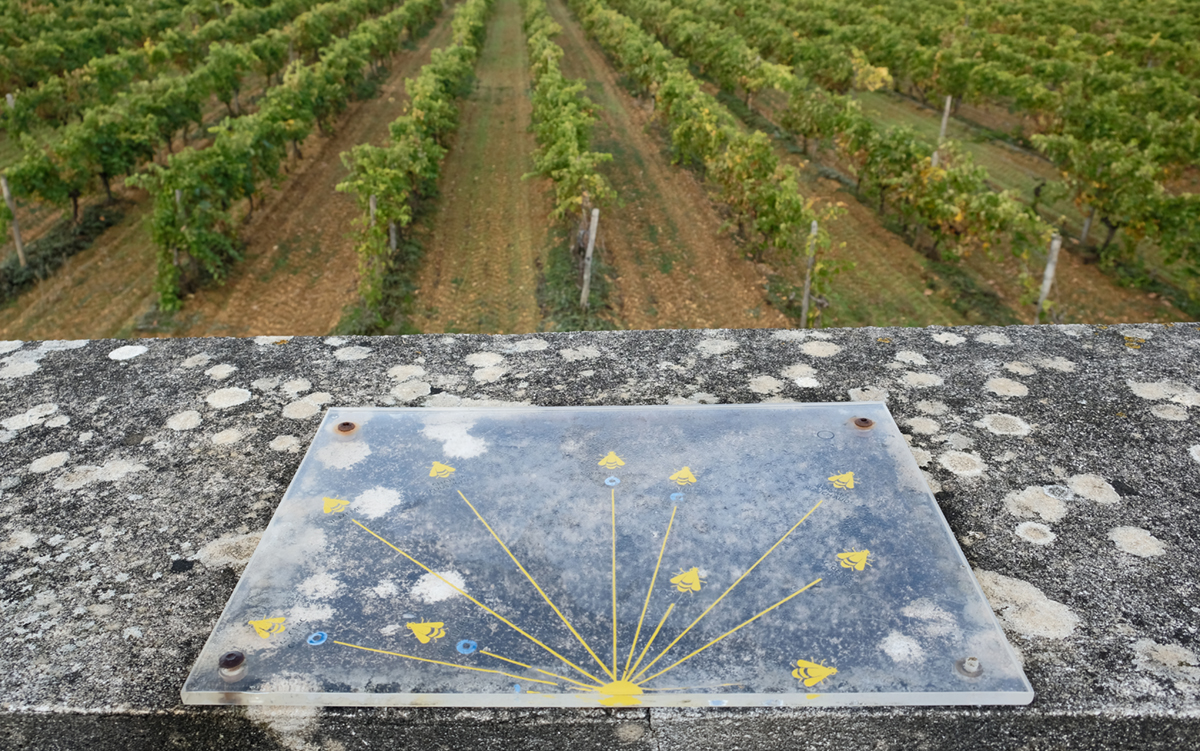Cognac
Western France
Doubtless the most famous brandy in the world, cognac is a spirit from the commune of Cognac, made with grapes grown in the Charente and Charente-Maritime departments. Located north of Bordeaux along the Gironde estuary, cognac (the spirit) became internationally known thanks to its location along the navigable Charente river, which opens out to the Atlantic between Île d’Oléron and La Rochelle, offering opportunities for trade with the United Kingdom and northern Europe. Those relationships were established long before the brandy came into renown, as much of the surrounding area had been ruled by the Angevin Empire, which controlled most of England, Normandy, and western France down to the Pyrenees.
In the early modern era, enterprising Dutch wine traders set up shop in the port cities along France’s west coast, and their dual technologies of land reclamation and distillation followed. These merchants created export markets for sweet wines fortified with brandewijn (‘burnt wine’ in Dutch) for strength and stability, as was the preferred style at the time—likely the ancestor of pineau des charentes, which remains popular in the Low Countries to this day. Shifts in political and economic circumstances eventually diminished this fortification industry, but the stills remained, along with vineyards planted for yield rather than quality. After the Nine Years’ War, the Dutch were expelled and supplanted by British merchants, who, along with newly-empowered domestic French distillers, elevated the reputation of these brandies, now enjoyed in their own right. As with many other commodity goods, the wealth of the British established and reinforced the high regard and regional specificity of cognac, which it still benefits from today.
The Cognac AOC’s crus radiate outward roughly from the town of Cognac—the small, elite trio of Grande Champagne, Petite Champagne, and Borderies at the center, then into Fins Bois, and beyond into Bons Bois and Bois Ordinaires. The former three represent traditionally the most desirable vineyard land, with favorable microclimates and limestone and chalk soil, while those qualities are perceived as less prevalent further outward. Notably, while there is some correlation between soil type and cru, one will note that the proximity to Cognac’s port on the Charente (and therefore, more economical shipping to wealthy export markets, ensuring a quicker return on investment) is at the center of the most highly-regarded subregions.
The principal grape used for cognac production is Ugni Blanc, the local name for Italy’s Trebbiano, which must comprise 90% of the blend to qualify as cru cognac (Colombard, Folle Blanche, and other less common grapes are also permitted). Ugni Blanc’s potential for acidity is its defining characteristic, which is highly desirable for a wine destined to be distilled. This quality is enhanced by the soils of the most well-regarded vineyard sites, with their preponderance of chalk and limestone.
Once picked, the grapes are pressed and fermented with native yeast. Sugar and sulfur additions are not permitted—at this point in the process, the product is de rigeur organic. The resulting dry, thin, highly acidic wine is not desirable, though all of these are assets at distillation time, creating reactions with the copper Charentais alembic stills that are beneficial to the taste and aroma of the resulting eau-de-vie. This nascent cognac must be double-distilled, multiplying the alcoholic strength of the base wine by a factor of ten, to around 70% by volume.
Aging is done exclusively in oak casks grown in the nearby Tronçais and Limousin forests. Wood staves for the barrels are seasoned through exposure to the open air for at least eight seasons. Barrels are constructed and toasted to the desired specifications by local tonneliers. The eau-de-vie becomes cognac only after two years in barrel, at which point it qualifies as a VS. The youngest brandy in a given blend defines the age designation: four years for VSOP, six for Napoléon, and ten for XO.
Cognac is big business—the numbers that define the industry are astounding. 98% is exported, mostly to the US and China. 90% of market share is held by just four multinational companies, with the vast majority of that being just one brand. 98% of eau-de-vie production destined to become cognac is made by négociants who do not age or bottle their own brandy. That spirit will be blended with dozens of others of varying vintage, representing perhaps hundreds of vineyards, in the pursuit of a finished cognac that is nearly indistinguishable from year to year, thanks to the skill of a master blender.
Of course, there are notable exceptions hidden within the remainder of those percentages. Our own Bourgoin stands in defiance of almost all other cognac—a fully estate product, where viticulture, vinification, distillation, aging, and bottling are all performed on site. Where, furthermore, each bottling is of a single vintage and single vineyard, unblended geographically or temporally. Unlike the goal of the larger, mainstream brands of consistency above all, Bourgoin is a clearly agricultural product, proudly showcasing variation across vintages. Their quality instead depends on their uncompromising viticulture on deep chalky soils, distilling savoir-faire gained through generations of practice, and barrel wood selected by Frédéric Bourgoin himself based on grain width and the soil type the tree grew in. While, as a baseline, cognac is a delicious spirit, this level of passion and intentionality elicits a product that is simply far more compelling than the overwhelming majority of the category.


